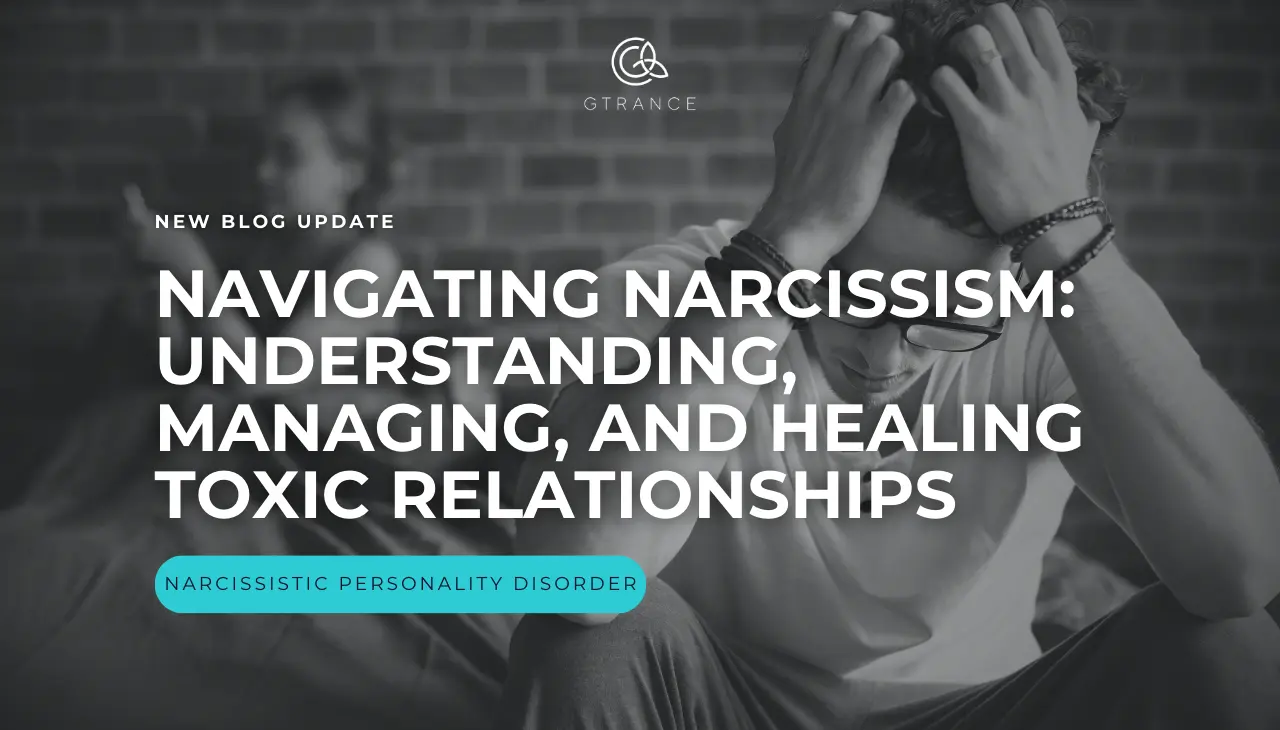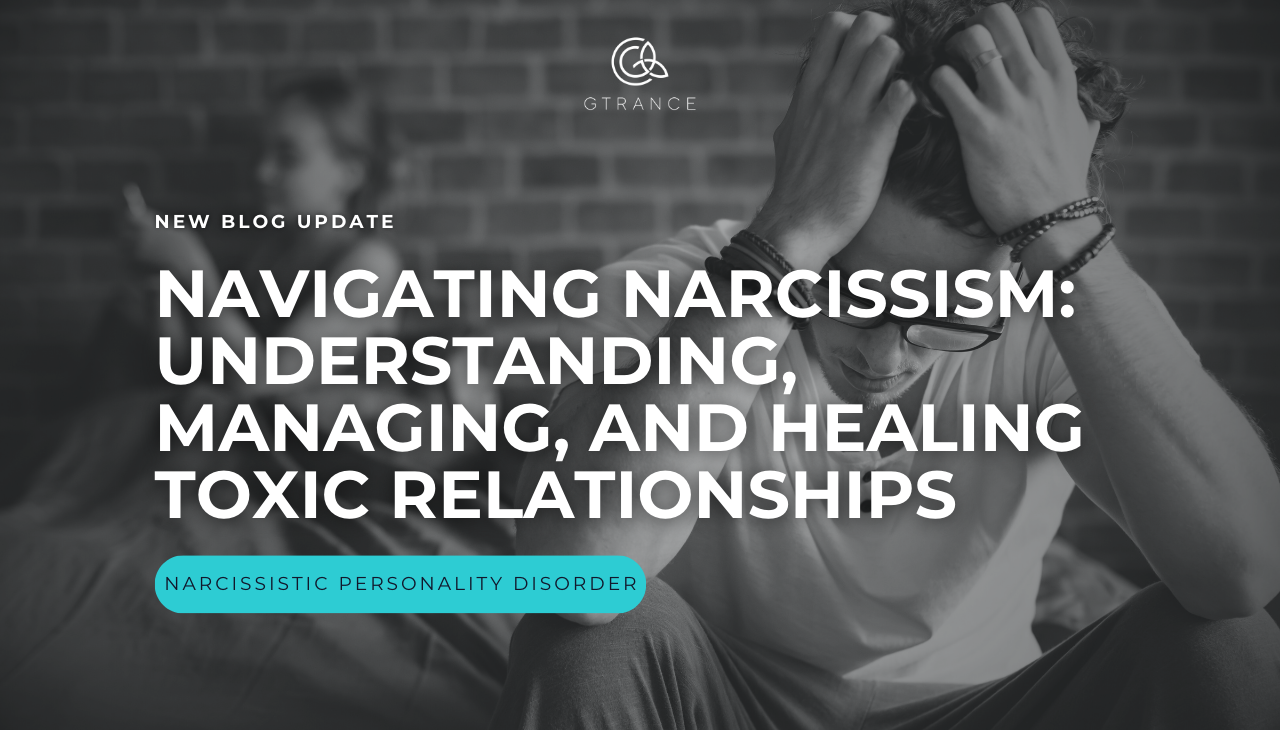
Narcissistic dynamics are among the most emotionally draining and psychologically complex experiences a person can endure. Whether the narcissist is a partner, boss, colleague, or family member, these relationships can leave deep emotional wounds and long-term consequences.
Understanding the psychological roots of Narcissistic Personality Disorder (NPD), recognizing the relationship patterns, and learning practical strategies for protection and healing can help you reclaim your sense of self. Through a combination of psychological insight and NLP (Neuro-Linguistic Programming) tools, this guide offers a path from confusion and depletion to clarity, empowerment, and peace.
What Is Narcissistic Personality Disorder (NPD)?
Narcissistic Personality Disorder is not simply arrogance or inflated self-esteem. It’s a clinical condition rooted in a fragile self-image, emotional neglect, and deep psychological wounds. People with NPD often display:
- A grandiose sense of self-importance.
- A need for constant admiration (narcissistic supply).
- Fantasies of unlimited success, power, beauty, or ideal love.
- Exploitation of others for personal gain.
- A lack of empathy.
- Intense sensitivity to criticism, often masked by defensiveness or aggression.
Behind the confident exterior lies an emotionally vulnerable and disconnected individual using false persona to avoid shame, vulnerability, and perceived inferiority.
The Narcissistic Relationship Cycle
While not formally recognized as stages in psychology, most narcissistic relationships follow a recognizable pattern. Knowing this cycle helps survivors detach emotionally and resist being pulled back in.
- Idealization
Often referred to as “love bombing,” the narcissist showers the target with affection, admiration, and attention. They mirror your values and dreams, creating a fast, intense connection.
Why it happens: This is how they secure narcissistic supply, admiration that validates their self-worth.
- Devaluation
Once the narcissist feels in control or becomes disillusioned, the charm fades. Criticism begins, emotional withdrawal occurs, and manipulation techniques like gaslighting or triangulation surface.
Why it happens: Your individuality threatens their control. Devaluing you restores their emotional superiority.
- Discard
This stage involves emotional or physical abandonment. The narcissist may ghost, cheat, or become cold and indifferent.
Why it happens: When you’re no longer a reliable source of validation, they move on to someone new.
- Hoovering
Named after the vacuum cleaner, hoovering is the narcissist’s attempt to “suck” you back into the relationship with apologies, gifts, or nostalgic messages.
Why it happens: Not out of love, but out of a need to reassert control and refill their supply.
Dealing With Different Types of Narcissists
- Female Narcissistic Partner
Female narcissists may appear emotionally sensitive but use guilt, jealousy, passive-aggression, or victimhood to manipulate.
Strategies:
- Set firm boundaries and don’t fall for guilt trips.
- Recognize manipulation disguised as emotion.
- Document interactions if co-parenting or sharing finances.
- Don’t try to “fix” her, focus on protecting your peace.
- Male Narcissistic Partner
Often controlling, emotionally detached, and hypercritical. Charm may be weaponized, and emotional abuse normalized.
Strategies:
- Trust your version of reality, gaslighting is real.
- Stay calm and firm, avoiding emotional reactions.
- Build a support network and have an exit plan if needed.
- Do not expect empathy or change without long-term therapy.
- Narcissistic Boss
May belittle others, steal credit, or micromanage to maintain control and superiority.
Strategies:
- Document everything.
- Avoid direct criticism, instead, frame things to appeal to their ego.
- Set clear work boundaries and protect your professional reputation.
- Considering your long-term career goals, your peace may be worth more than the paycheck.
- Narcissistic Colleague
Typically, attention-seeking, manipulative, and competitive, sometimes sabotaging team dynamics.
Strategies:
- Stay task-focused and emotionally neutral (grey rock method).
- Limit personal sharing.
- Assert boundaries and clarify your contributions.
- Avoid office drama and gossip.
The Root Causes of Narcissism
Narcissism is a defense mechanism, a false self-constructed in response to emotional injury. While not an excuse for abusive behavior, understanding the origin can support healing and detachment.
Common Root Causes Include:
- Childhood trauma or neglect
(Love was conditional or inconsistent)
- Overindulgence and excessive praise
(Fostering entitlement without empathy)
- Emotional invalidation
(Feelings dismissed or ridiculed)
- Enmeshment
(The child becomes a caretaker to the parent, losing identity)
- Cultural factors
(Societal emphasis on appearance, fame, and external success)
How to Deal with a Narcissist
Whether it’s a partner, friend, or colleague, these strategies apply universally:
- Set Boundaries – Define what’s acceptable and stick to it, even when they test you.
- Don’t Take It Personally – Their behavior reflects their wounds, not your worth.
- Avoid Power Struggles – Use the grey rock method, stay unreactive and uninteresting.
- Seek Support – Therapy, coaching, or community can provide clarity and strength.
- Consider No Contact – In cases of ongoing emotional or physical harm, distance may be necessary for healing.
How to Avoid Raising a Narcissistic Child
If you’re a caregiver, you can break the cycle by raising emotionally intelligent and empathetic children.
Key Parenting Tips:
- Praise effort, not fixed traits.
- Encourage emotional expression and regulation.
- Model vulnerability and accountability.
- Avoid overindulgence, set loving limits.
- Teach empathy: “How do you think they felt?”.
- Reinforce internal validation over external praise.
Healing and Empowerment: NLP Tools for Recovery
To truly heal from narcissistic abuse, you must reconnect with your authentic self. NLP provides practical tools for reclaiming your inner power.
Healing Strategies:
- Anchoring – Create physical triggers (like touching your heart) to recall calm and safety
- Reframing – Shift your internal narrative from victimhood to empowerment
- Future Pacing – Visualize your life free from narcissistic control, who are you becoming?
Affirmation: “I am no longer available for relationships that require me to abandon myself.”
From Surviving to Thriving
Narcissists don’t change easily. While some may seek therapy and develop self-awareness, most resist deep transformation. Your job is not to save or fix them, it’s to remember your worth, protect your peace, and lead with conscious awareness.
By understanding the psychological dynamics, applying NLP principles, and practicing self-care, you can break free from toxic patterns and reclaim your emotional freedom.
You are not here to earn love.
You are here to embody it, beginning with how you treat yourself.
©2025 Grace El Tayar
